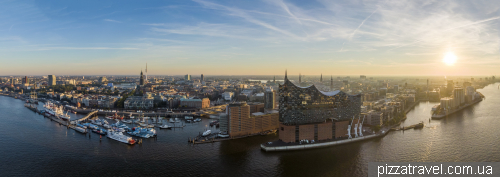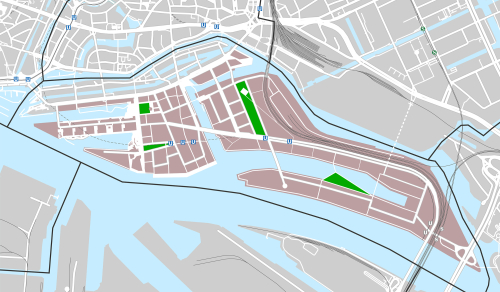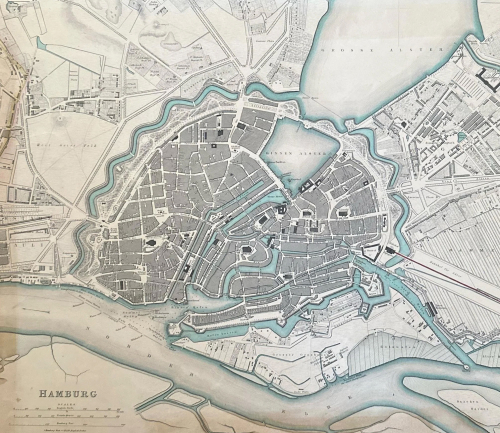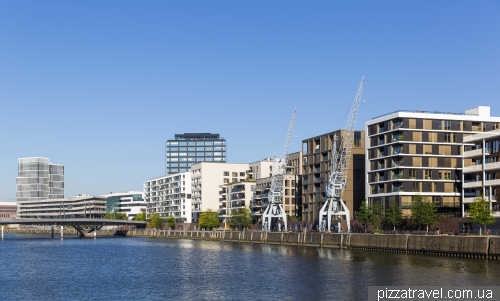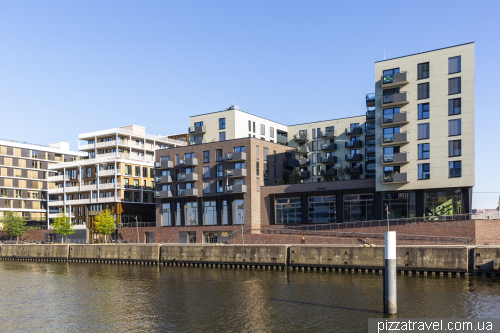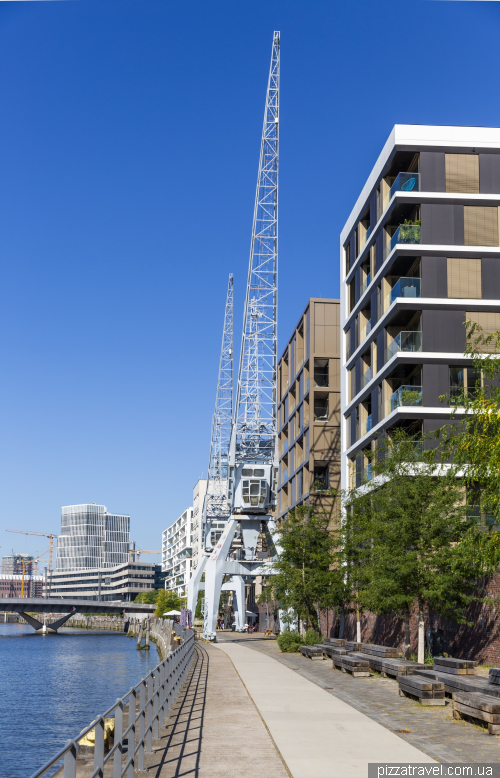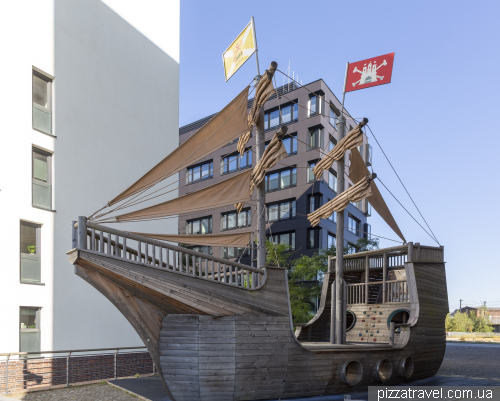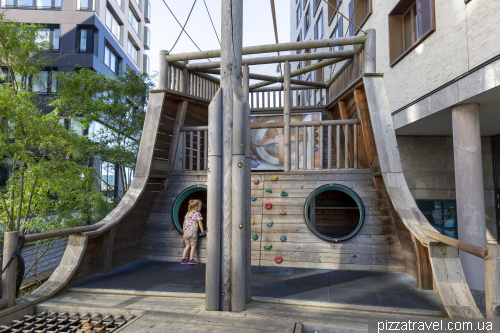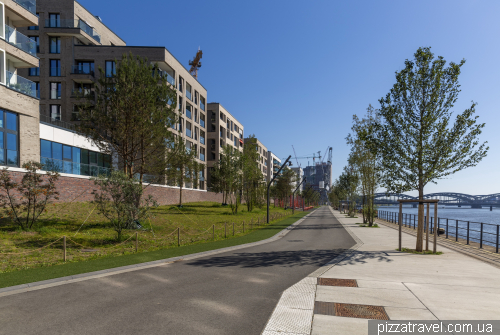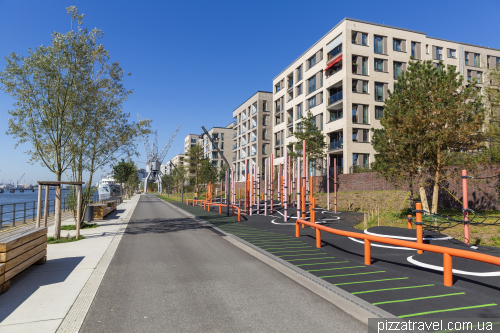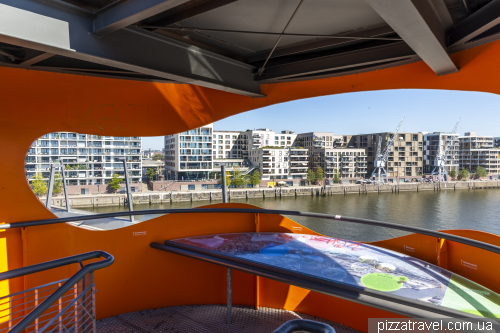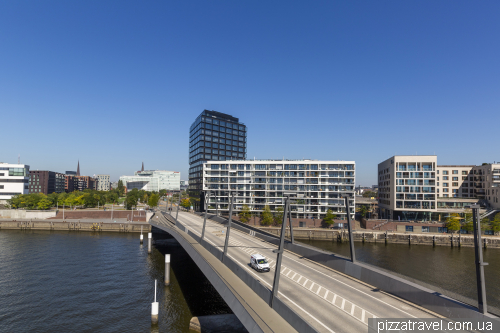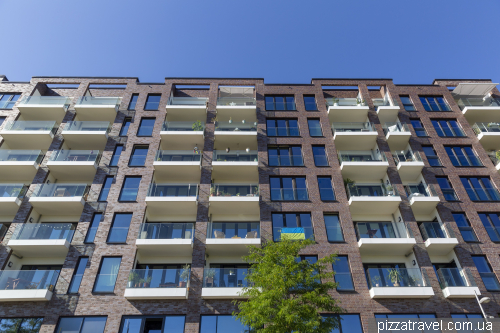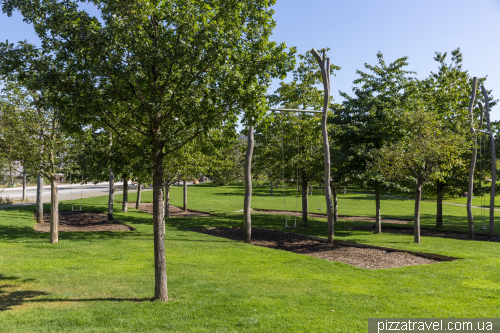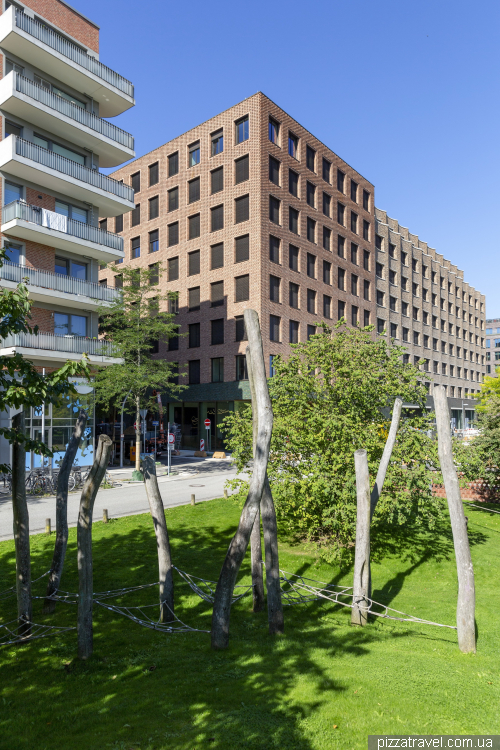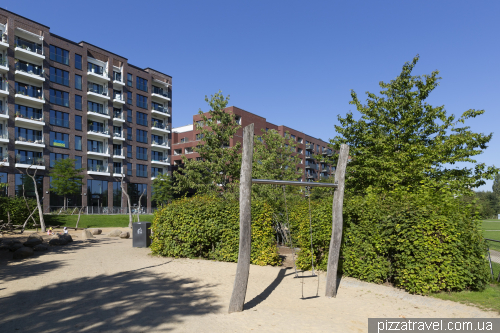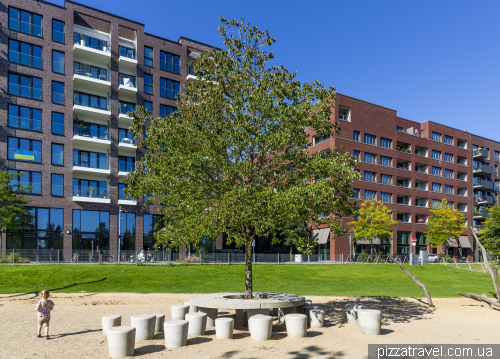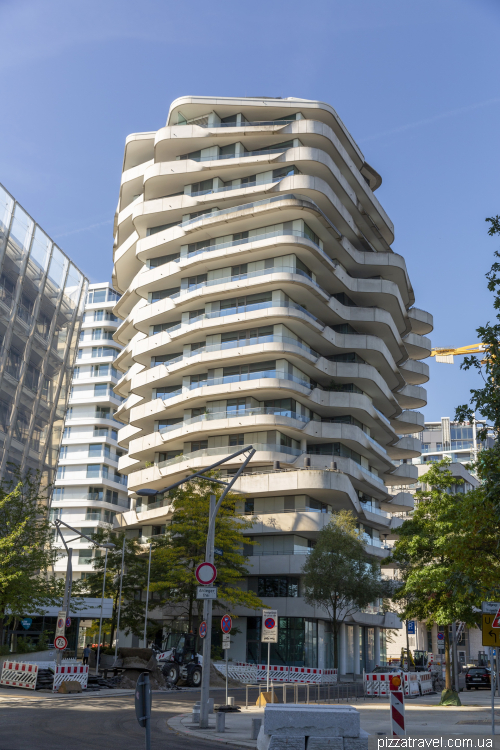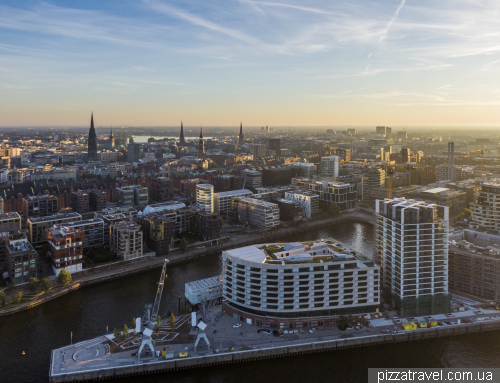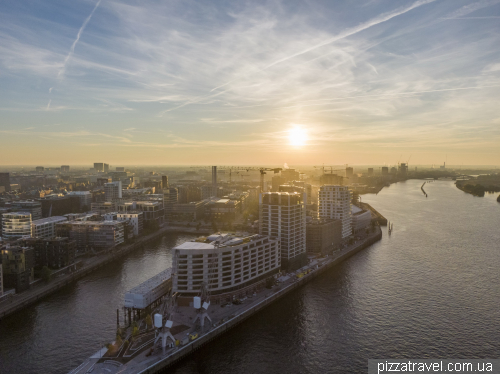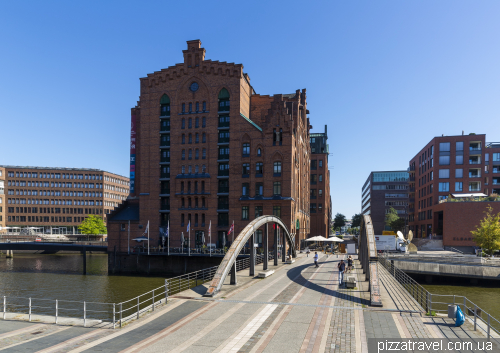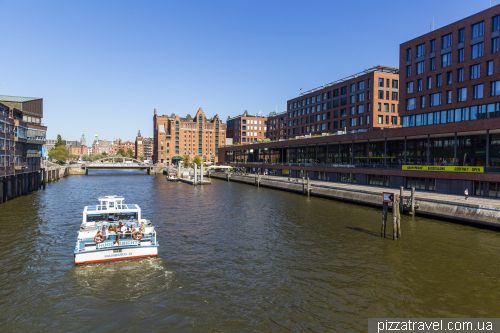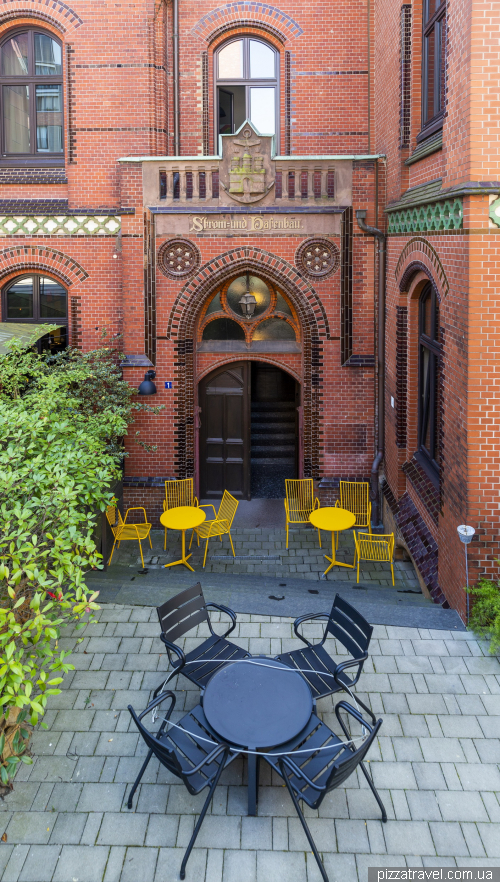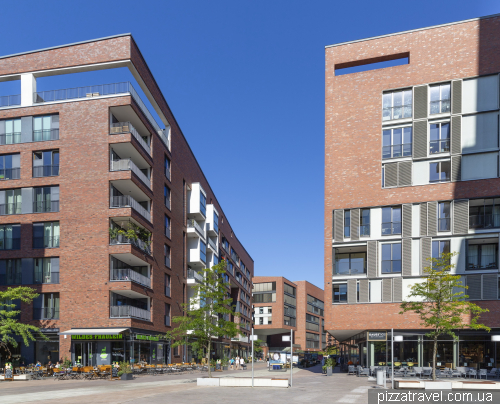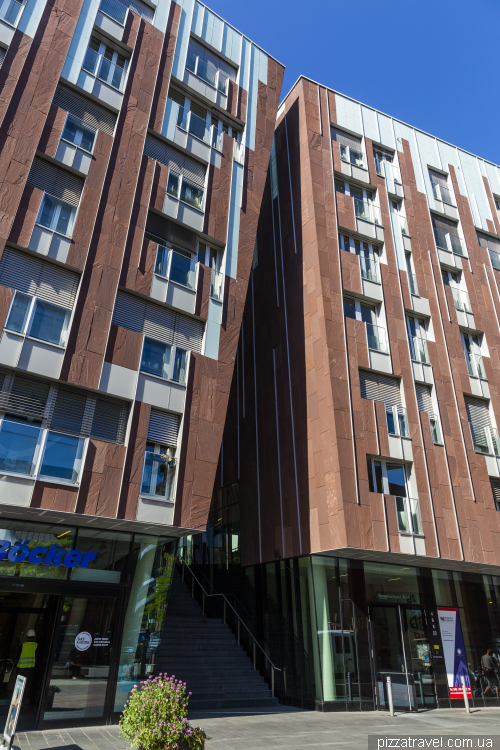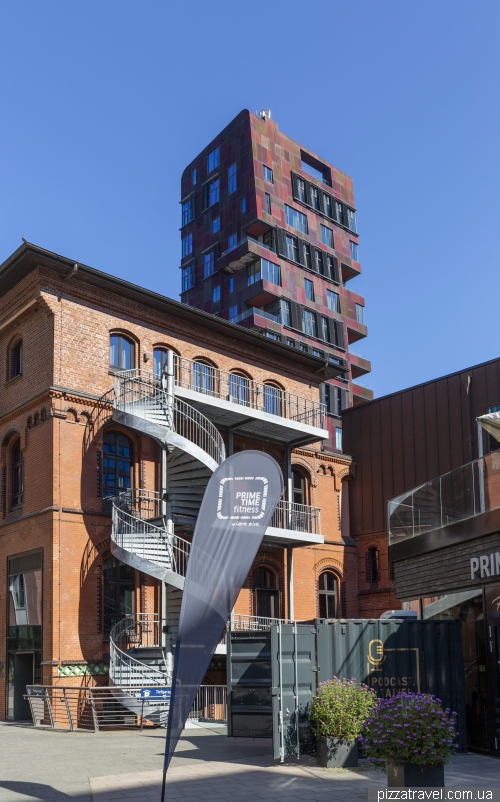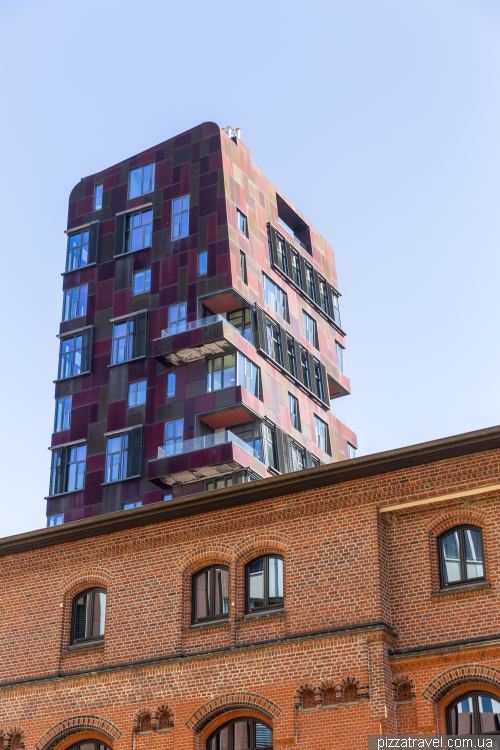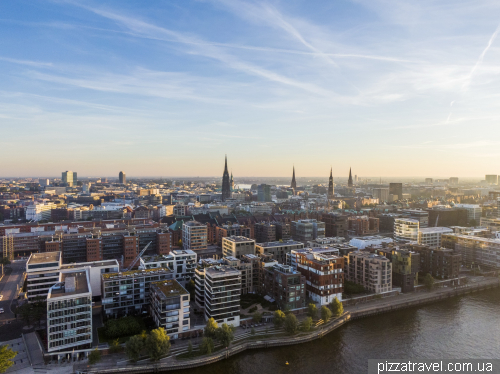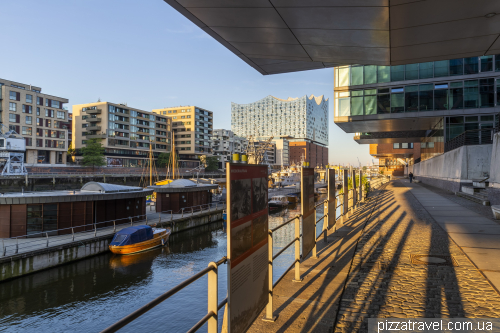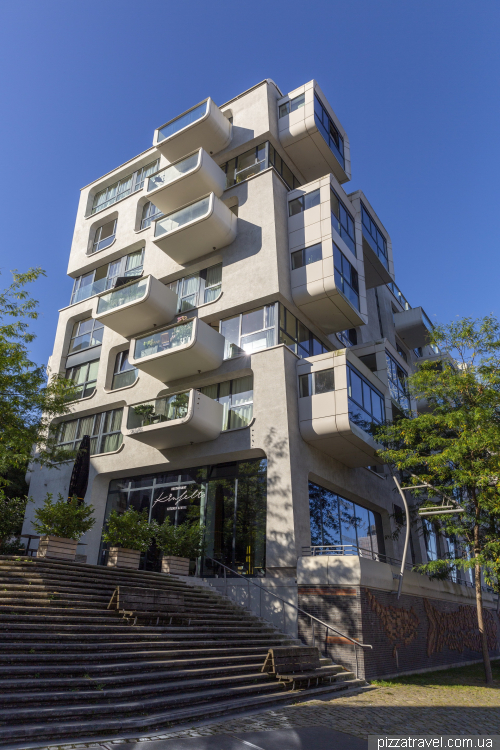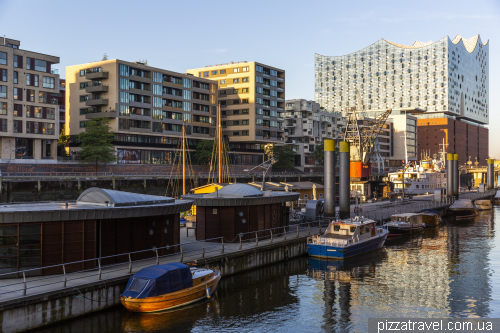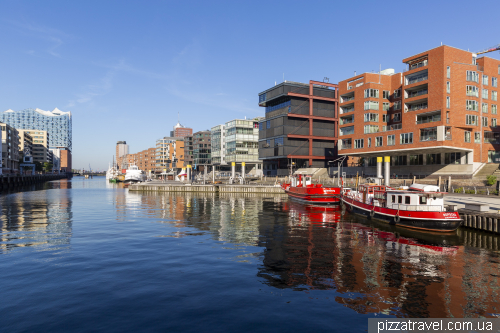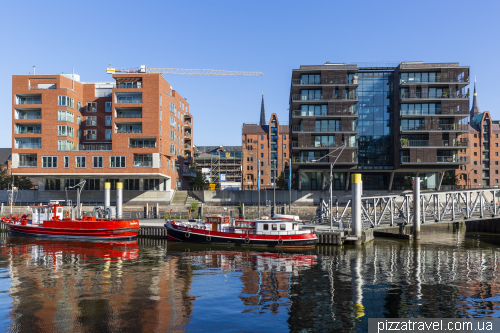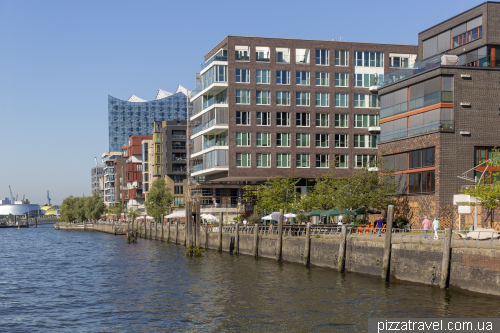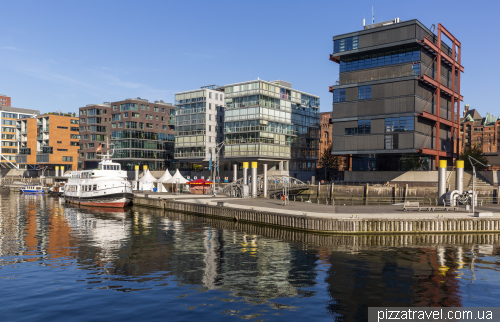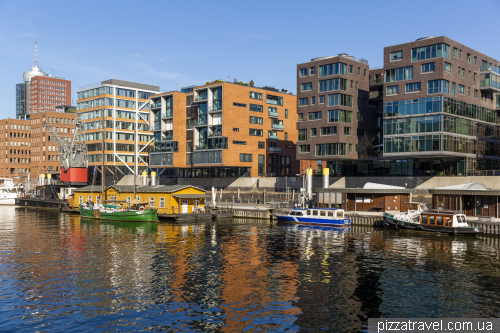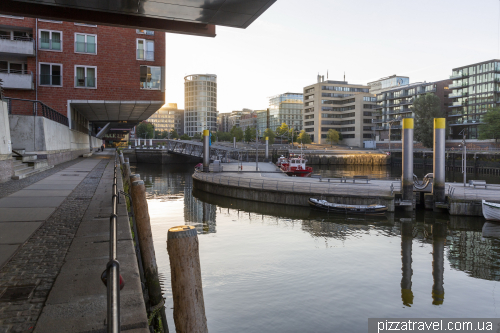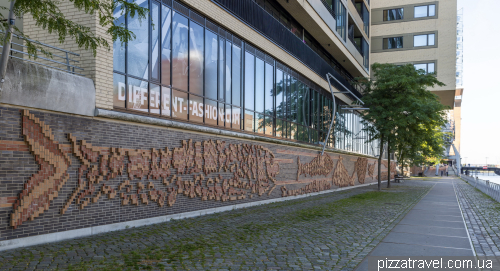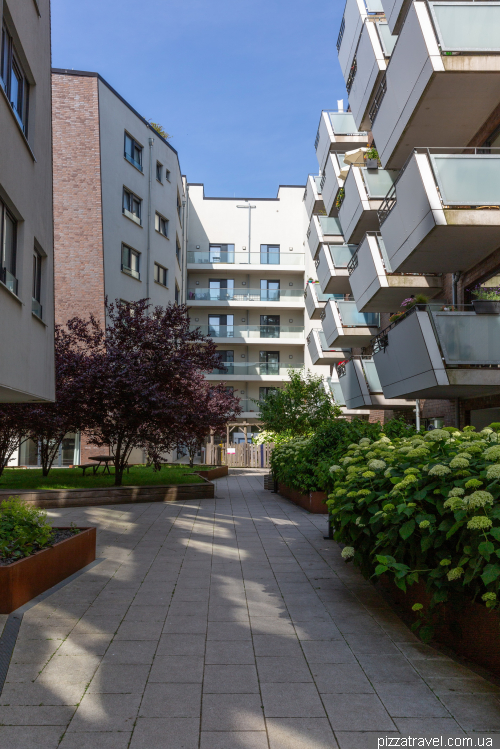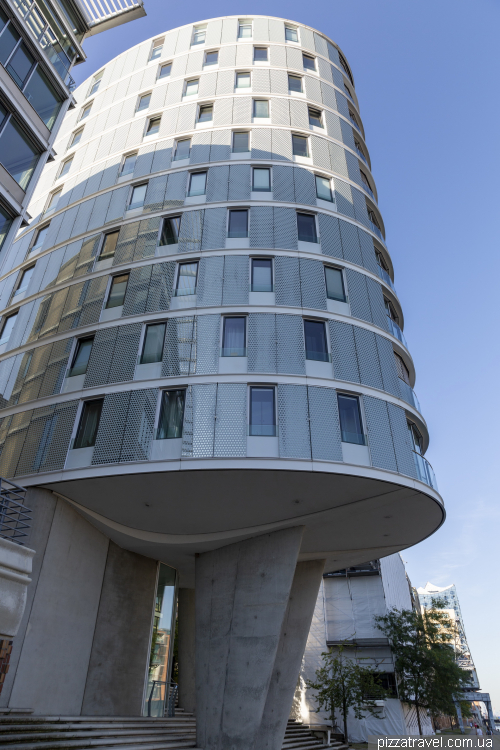Until the beginning of the 19th century, this area was behind the city gates and the city walls ran along what is now Am Sandtorkai Street. Beyond the walls were meadows, and even further away was the place of executions, including the execution of pirates. This large island in the southwest is the territory of the present-day Hafen City.
In the middle of the 19th century, the city walls were demolished and the port was built. In 1888, the warehouse district (Speicherstadt) came into being; it is now not only part of the new Hafen City district, but also a UNESCO World Heritage Site.
After World War II, freight traffic grew steadily, though the port was already 100 years old at the time. Since the mid-1960s, the active port areas were moved downstream of the Elbe. The Hafen City project started in 2001 and the first quarter was completed in 2009.
Given that Hamburg is famous for flooding, the use of innovative flood protection technologies was an important part of the redevelopment of the new district. For example, roads are built on embankments 7.6 meters above the normal tide line. Buildings are waterproofed on the first floors. In addition, all buildings that can be flooded have a second entrance above 7.6 meters. This is all very expensive, so you should not be surprised at the cost of housing.
And housing here is expensive, very expensive. Probably the largest amount of super-expensive new housing in the whole of Germany, if not in the whole of Europe. Given the interest rate situation, for 2024, I don't think the developer will be able to sell many apartments in the next few years, so they will probably wait for better times.
At the time of our visit, in 2023, about 70% of the planned work had been completed. We took a walk through all the districts that have already been built. Hafen City has many good playgrounds, so it is convenient to walk here with children, you can build a route from playground to playground.
We started with the western part, Baakenhafen, it is the newest and construction is in full swing. It is located between the subway stations Elbbrücken and HafenCity Universität. Here is a map of all the districts for orientation.
Good underground parking 53.537583, 10.013250. Here you can walk around the bay and stroll in Baaken Park (https://atelier-loidl.de/en/baakenpark-hamburg), it has interesting designs and a nice playground (53.538389, 10.013639).
In recent years Germany has been trying to make car-free districts, for example, this district has only 40 parking spaces per 100 apartments. Considering that we ourselves live in a similar neighborhood, I can say that despite all the beautiful fairy tales from urbanists, this is an absolutely failed idea. Especially in such an automobile country, a country with unlimited autobahns, where the automobile has been elevated to a cult.
The problem here is that modern apartments are extremely expensive, and people who can afford them don't live without a car. Even if they rarely use it, they have a car, we see this in our neighborhood. This is quite a big topic for a separate article.
Playground (53.540028, 10.008833)
The promenade Kirchenpauerkai (53.536667, 10.013833) will be the longest in Hafen City, and there is even a track with a special jogging surface.
A small observation deck (53.538583, 10.008083).
North of the HafenCity Universität subway station are the Elbtorquartier district. This is also where HafenCity's largest green space, Lohsepark, is located. In this central district, there is an inclusive housing complex. This is not a unique project, there is also such a house in our neighborhood. The idea here is that both the house and the apartments are designed specifically for people with disabilities.
Most of the housing here is for rent.
The Strandkai district, thein 2023 was under construction, you can't walk there yet, but this is where several interesting buildings are located.
Marco-Polo-Tower (2009, 53.539722, 9.992972, https://behnisch.com/work/projects/0349)
A unique building by Behnisch Architekten, whose appearance varies depending on the direction. Moreover, the building becomes wider in an upward direction, the area of the 12th floor is considerably larger than the ground floor. On floors 13-16 there are 4 apartments, each for a whole floor. After the completion of construction in 2009, apartments here were sold at prices from 309 000 EUR (57 sq.m.) to 3 750 000 EUR (340 sq.m.) and at that time, these were the most expensive apartments in Hamburg.
Now the prices have increased significantly (2023):
8th floor, 2 rooms, 71 sqm. - 1 150 000 EUR, all prices in the article are valid for 2024.
8 floor, 2 rooms, 80 sq.m. - 1 350 000 EUR
8 floor, 5 rooms, 151 sq.m. - 2 450 000 EUR
12 floor, 5 rooms, 303 sq.m. - 7 400 000 EUR
The Crown (2023, 53.539611, 9.990528, https://www.ingenhovenarchitects.com/)
Newly built residential building by star architect Christoph Ingenhoven.
8th floor, 2 rooms, 56 sqm. - 912 000 EUR
5 floor, 3 rooms, 124.5 sq.m. - 2 450 000 EUR
12 floor, 4 rooms, 175 sq.m. - 5 500 000 EUR
13 floor, 5 rooms, 258 sq.m. - 6 900 000 EUR
14 floor, 5 rooms, 303 sq.m. - 7 700 000 EUR
Fifty9 (2023, 53.539278, 9.992306)
Architect Hadi Teherani.
4th floor, 2 rooms, 61 sq.m. - 885 000 EUR
12 floor, 4 rooms, 159 sq.m. - 3 160 000 EUR
Since Hafen City is located on the water, the districts are connected by bridges.
A huge cruise terminal is being built in the southern part of the Überseequartier, but the northern part is finished. The Übersee Boulevard already looks like one of the most interesting streets in the city.
The houses are tilted towards each other.
Cinnamon Tower (2015, 53.542694, 9.998222, https://bolles-wilson.com/project/cinnamon-tower/)
A unique cinnamon-colored apartment building from the Münster-based architecture office Bolles+Wilson. Each floor is a separate apartment, and the penthouse occupies three floors (314 square meters, 7 900 000 EUR), with a ceiling height of 4.10. Interestingly, the penthouse has a wood-burning fireplace.
The apartments are already equipped with kitchens and you probably think that since the apartments are expensive, they put Miele appliances there? Well, Miele is the top equipment for ordinary people, and for those who can pay 8 million for an apartment, they put equipment Gaggenau Hausgeräte. The prices there are of a completely different level, you can search on the Internet, a refrigerator for 10 000 - 12 000 EUR is a common thing.
The Am Sandtorkai/Dalmannkai district is the first fully completed district, and over the past 10 years has already become one of the city's favorite areas for walking and relaxing. As in the whole of Hafen City, every building here is unique, with more than 30 architectural firms building the district.
Floating pedestrian pontoons are laid out in the middle of the harbor.
The Oval building by Ingenhoven Architects stands out (2008, 53.541889, 9.990611, https://www.ingenhovenarchitects.com/)
Lots of interesting apartment buildings still under construction:
Roots (53.53796, 10.01871, https://roots-hamburg.de/) - the highest wooden house in Germany, apartments 1 130 000 EUR - 1 790 000 EUR depending on the storey.
Elbtower (53.53474, 10.02618, https://en.wikipedia.org/wiki/Elbtower) - with a height of 245 meters, it will be the tallest building in Hamburg. However, at the beginning of 2024 it became known that the developer went bankrupt, so the situation is not clear at the moment.
Eleven Decks (53.541000, 9.997611, https://elevendecks.de/) - house with interesting terraces
BEAT (53.53562, 10.01899, https://beat.tide-hafencity.com/)
Interesting houses on artificial islands (53.53855, 10.01124, https://www.welt.de/)
